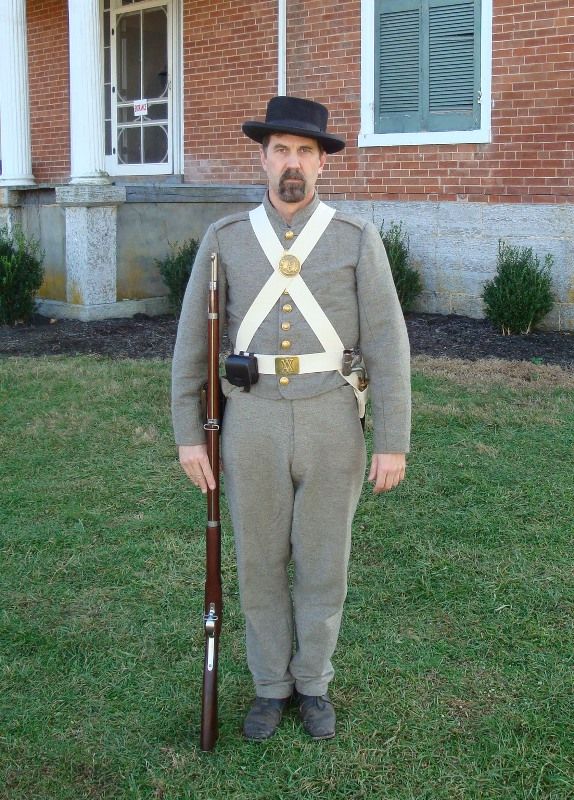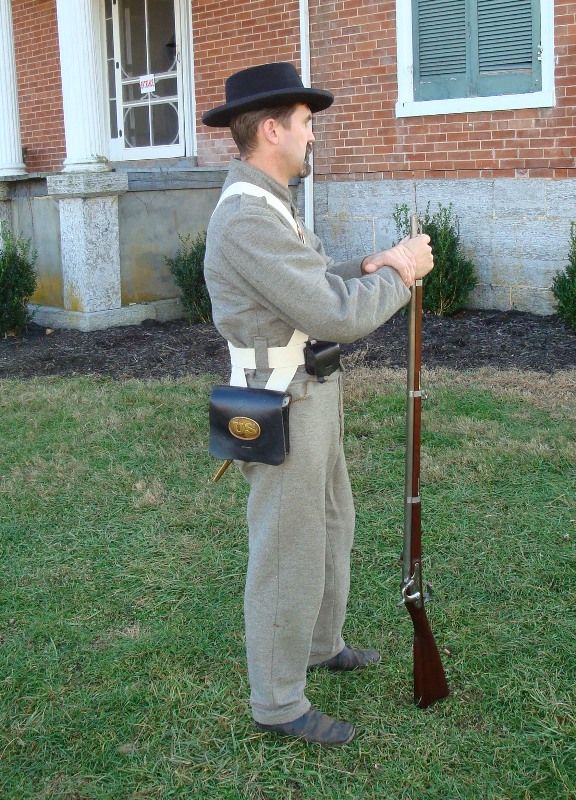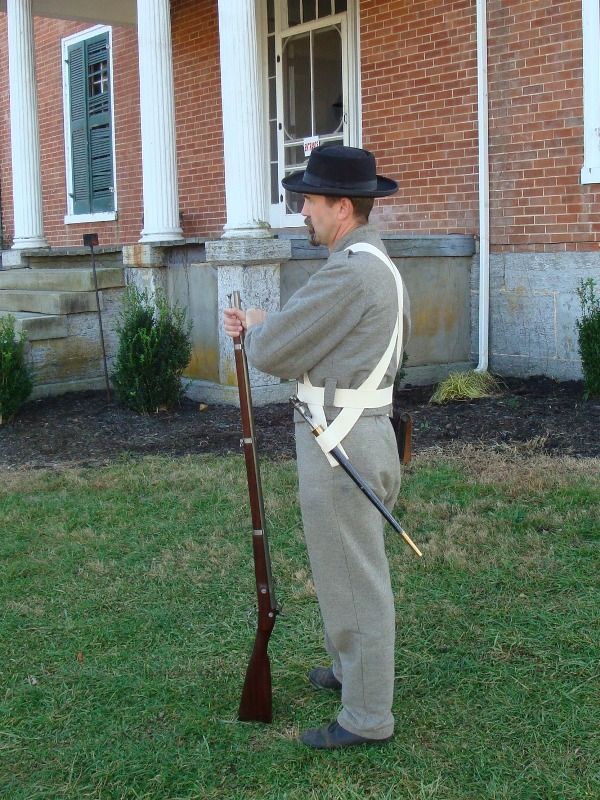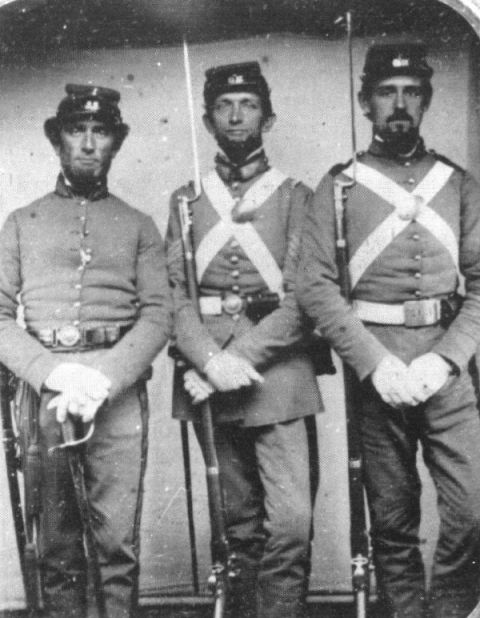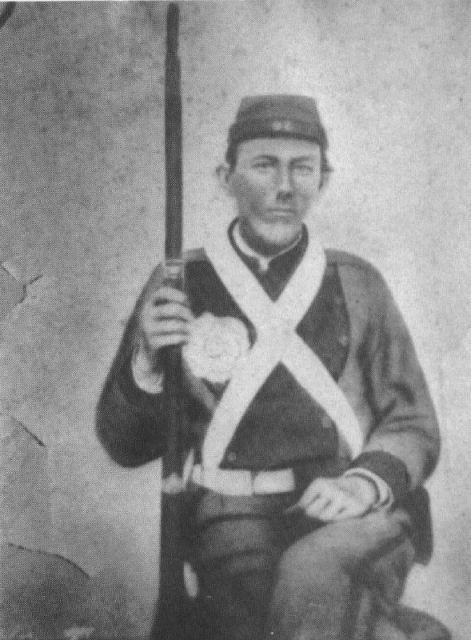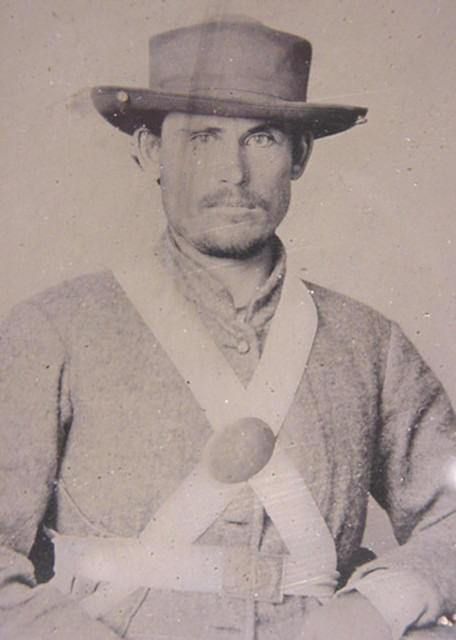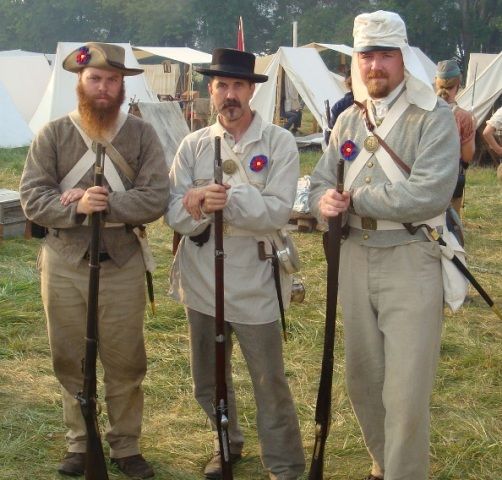-
Friends, our 2nd Amendment rights are always under attack and the NRA has been a constant for decades in helping fight that fight.
We have partnered with the NRA to offer you a discount on membership and Muzzleloading Forum gets a small percentage too of each membership, so you are supporting both the NRA and us.
Use this link to sign up please; https://membership.nra.org/recruiters/join/XR045103
You are using an out of date browser. It may not display this or other websites correctly.
You should upgrade or use an alternative browser.
You should upgrade or use an alternative browser.
Militia Webbing
- Thread starter wpnsman
- Start date

Help Support Muzzleloading Forum:
This site may earn a commission from merchant affiliate
links, including eBay, Amazon, and others.
You look very sharp if far too clean to have been in the field yet. Nice work. I have noticed the rear corner of the outer cartridge box flap bent out in contemporary CW photos as yours is. Do you suppose it was done to facilitate fast opening of the box in a battle?
You have 15 minutes to either edit or delete a post. :wink:hawkeye2 said:Double post, sorry.
Claude, I went to delete it but did't see that option avaliable. Did I miss something?
I just went in to atempt to delete this post for fun and don't see any way to do it. Oops, see it now. Up in the upper left hand side.
I just went in to atempt to delete this post for fun and don't see any way to do it. Oops, see it now. Up in the upper left hand side.

- Joined
- May 6, 2014
- Messages
- 17,422
- Reaction score
- 16,411
Was there one or more factories in the Pre War South where cotton was turned into webbing? Though I have researched other Southron manufacturers, I never thought to investigate that.
Though crossed white belts look/looked sharp then as now, it made a superb aiming point which was not a good thing for a Soldier wearing them. Of course if they had not bleached the webbing or dyed it, then it wouldn't stand out on the uniform as much. (Worked out well in the Post Civil War years right up to the third quarter of the 20th century in Khaki colour and then OD Green.) Using cotton webbing would have lessened the need for leather if mills in the South could have made it.
Gus
Though crossed white belts look/looked sharp then as now, it made a superb aiming point which was not a good thing for a Soldier wearing them. Of course if they had not bleached the webbing or dyed it, then it wouldn't stand out on the uniform as much. (Worked out well in the Post Civil War years right up to the third quarter of the 20th century in Khaki colour and then OD Green.) Using cotton webbing would have lessened the need for leather if mills in the South could have made it.
Gus
I had the same thought as Artificer on the crossed webbing providing a spot-on aiming point. Wonder how many good ol' boys back then ended up with that brass medallion buried in their breast.
Notwithstanding, you done yourself proud, Wpns Man. You could step right out of that picture back to July 21st,1861, and start firing. :hatsoff:
Notwithstanding, you done yourself proud, Wpns Man. You could step right out of that picture back to July 21st,1861, and start firing. :hatsoff:
Billnpatti
Cannon
- Joined
- Aug 11, 2008
- Messages
- 7,340
- Reaction score
- 44
Very nice looking!! :thumbsup:
Thanks all,
The webbing looks nice and clean in this picture because it was the first viewing of the prototype. In the field it quickly becomes dirty and gets "character" on its own.
I don't think they were to concerned about providing the enemy with an aiming point or camouflage in those days, tactically speaking.
I did a lot of research for this project and webbing was very popular among pre-war militia units because it was cheaper than providing all leather accouterments. The Confederate Army in its infancy must have thought the same as I uncovered large amounts of webbing being issued to newly formed Virginia units throughout the spring and summer of 1861.
The documents were returns and correspondence to the Governor's Office of issues to newly formed Companies and Regiments. It was issued in bulk by the yard with the quantities into the hundreds for individual companies. So much so that I believe webbing was the norm as opposed to all leather accouterments in the early days of the war.
In my experience it takes 5 yards of webbing on average to produce one set of accouterments per Soldier. That is the box belt, waist belt and baldric. We made leather ends for the box belts and devised a simple way to utilize plentiful Enfield scabbards on the baldrics.
This enabled members who already had an Enfield scabbard to save some money and they were inexpensive enough for those that had to purchase one. They were a good alternative than telling everyone they had to go out and buy a custom made 1828 scabbard.
The webbing looks nice and clean in this picture because it was the first viewing of the prototype. In the field it quickly becomes dirty and gets "character" on its own.
I don't think they were to concerned about providing the enemy with an aiming point or camouflage in those days, tactically speaking.
I did a lot of research for this project and webbing was very popular among pre-war militia units because it was cheaper than providing all leather accouterments. The Confederate Army in its infancy must have thought the same as I uncovered large amounts of webbing being issued to newly formed Virginia units throughout the spring and summer of 1861.
The documents were returns and correspondence to the Governor's Office of issues to newly formed Companies and Regiments. It was issued in bulk by the yard with the quantities into the hundreds for individual companies. So much so that I believe webbing was the norm as opposed to all leather accouterments in the early days of the war.
In my experience it takes 5 yards of webbing on average to produce one set of accouterments per Soldier. That is the box belt, waist belt and baldric. We made leather ends for the box belts and devised a simple way to utilize plentiful Enfield scabbards on the baldrics.
This enabled members who already had an Enfield scabbard to save some money and they were inexpensive enough for those that had to purchase one. They were a good alternative than telling everyone they had to go out and buy a custom made 1828 scabbard.
- Joined
- May 6, 2014
- Messages
- 17,422
- Reaction score
- 16,411
Wpns Man said:I don't think they were to concerned about providing the enemy with an aiming point or camouflage in those days, tactically speaking.
Well, the Pre War Militia was not concerned about providing an aiming point as they were often or usually concerned about looking as sharp as possible and often to impress the Ladies. White Cross belts on a dress uniform were seen as the most fashionable then (and earlier) for Enlisted Dress Uniforms.
Some Pre War Militia leather belts and accoutrements were all show and no go. Those in this category had leather items that were downright flimsy and would not stand up to a month's campaigning.
I agree in the rush to get Southrons equipped for war, that webbing was at first extremely important. Interesting information you provided on that, BTW and thank you.
The Hodgepodge of uniforms worn by both the North and South at 1st Manassas changed quite a few minds as what the most serviceable and tactical uniforms proved to be.
Gus
Ken Cormier
50 Cal.
- Joined
- Nov 9, 2010
- Messages
- 1,325
- Reaction score
- 2
Do not know any thing about them but I think there cool.
The first picture are members of the Richmond Greys taken in Dec of '59 or, pre-war Militia. The second and third pictures are early war images of members of the 11th Va.
Webbing is not as durable as leather but provided a quickly procured and efficient alternative. Given the numbers of newly formed regiments there wasn't time to manufacture or procure the leather accouterments in sufficient quantities to issue in mass.
As I said, the quantities of webbing I have seen documented as being issued is quite staggering. In my opinion, at least relating to Virginia, units accoutered in all leather traps would have been the exception in the first days of the war.
Webbing is not as durable as leather but provided a quickly procured and efficient alternative. Given the numbers of newly formed regiments there wasn't time to manufacture or procure the leather accouterments in sufficient quantities to issue in mass.
As I said, the quantities of webbing I have seen documented as being issued is quite staggering. In my opinion, at least relating to Virginia, units accoutered in all leather traps would have been the exception in the first days of the war.
Very handsome kit, sir. Did you hand sew the webbing?
Thank you,
Yes, they are entirely hand sewn. The box belts have leather ends attached to them for durability. Though I have seen original examples that just had button holes and buttons to attach to the cartridge box.
The waist belts just have the ends folded over and sewn to prevent fraying. The buckles attach through the webbing with period prongs.
The trick was coming up with a simple period method of attaching the scabbards to the baldrics.
I basically came up with a loop to slide the scabbard through. The inside of the loop has a button hole on the backside.
The other free end of the baldric has two button holes to allow for some adjustment to overall length.
In operation the hook on the scabbard is placed into one of the button holes on the free end.
The scabbard is then slid into the loop of the baldric and the hook is again engaged through the button hole on the inside of the loop.
Simple to manufacture and no addition hardware was required.
Yes, they are entirely hand sewn. The box belts have leather ends attached to them for durability. Though I have seen original examples that just had button holes and buttons to attach to the cartridge box.
The waist belts just have the ends folded over and sewn to prevent fraying. The buckles attach through the webbing with period prongs.
The trick was coming up with a simple period method of attaching the scabbards to the baldrics.
I basically came up with a loop to slide the scabbard through. The inside of the loop has a button hole on the backside.
The other free end of the baldric has two button holes to allow for some adjustment to overall length.
In operation the hook on the scabbard is placed into one of the button holes on the free end.
The scabbard is then slid into the loop of the baldric and the hook is again engaged through the button hole on the inside of the loop.
Simple to manufacture and no addition hardware was required.
Rockwell Torrey
36 Cal.
- Joined
- Aug 29, 2014
- Messages
- 54
- Reaction score
- 0
Nice looking. Very PC.
I did a mock up and took it to the range.
It was fun.
I did a mock up and took it to the range.
It was fun.
- Joined
- May 6, 2014
- Messages
- 17,422
- Reaction score
- 16,411
The manner in which you describe you made the webbed belts sounds ingenious. The effect and serviceability of the way you did it shows great results.
Leather support "tabs or tongues" have been known to have been sewn to cartridge box web straps some time before that. Leather was also used in high stress areas on Confederate Canvas Rifle Musket slings later on in the war.
Bottom line is you replicated how your unit may have been issued webbing early in the War and then you had to come up with a way to use that webbing. I'm sure in the period they too were challenged to find a way to use the webbing effectively, as well.
Nicely done.
Gus
Leather support "tabs or tongues" have been known to have been sewn to cartridge box web straps some time before that. Leather was also used in high stress areas on Confederate Canvas Rifle Musket slings later on in the war.
Bottom line is you replicated how your unit may have been issued webbing early in the War and then you had to come up with a way to use that webbing. I'm sure in the period they too were challenged to find a way to use the webbing effectively, as well.
Nicely done.
Gus
Similar threads
- Replies
- 108
- Views
- 8K




